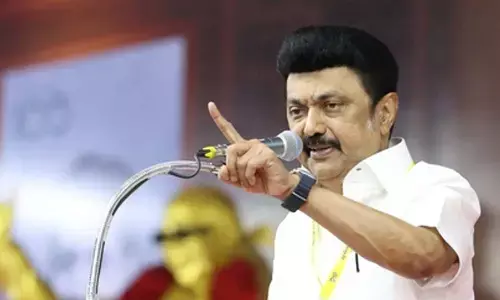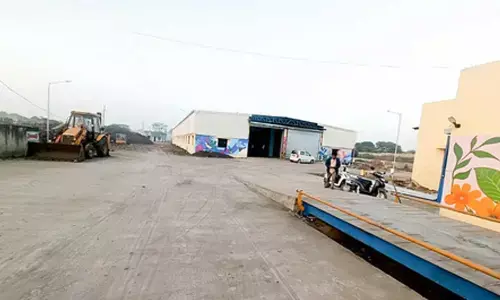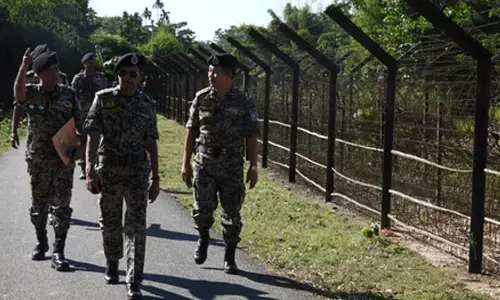Covid-19: Reopening strategies for schools

Covid-19: Reopening strategies for schools
With the decreasing case load due to Covid-19 in most States in India, lockdowns and mobility restrictions imposed in March 2021 for the second wave in many States have been gradually withdrawn
With the decreasing case load due to Covid-19 in most States in India, lockdowns and mobility restrictions imposed in March 2021 for the second wave in many States have been gradually withdrawn. Most States have allowed the reopening of offices, shops, public transport, restaurants and public places including places of worship.
The big dilemma for both administrators and parents now is on the decision to reopen schools. There is widespread apprehension on the risk of Covid-19 infection if schools reopen. Agencies such as WHO, UNICEF and UNESCO emphasise the need for all schools to reopen to provide in-person learning at an early date, and that schools should be one of the first to open during the reopening phase.
The justification for school reopening is that schooling is not just about the taught component of the learning process but it entails social interaction which is critical to a child's growth and development and to imbibe societal norms. This has a long term impact on the child's mental health which will have a profound impact on the future generations both from a societal perspective as well as an economic perspective. Evidence also shows that children, especially from the poorer segment of society, have faced an increased risk of domestic abuse, violence and early marriage. Many of these children are forced into work by the families due to the dire economic strain on the families.
Once they are forced out of school due to school closures, there is a higher likelihood of them becoming permanent drop-outs from school. Additionally, many schools provide a nutritional supplement through the mid-day school meal program and this has been adversely impacted due to school closures and the families find it difficult to compensate the nutritional deprivation.
Children with learning disabilities and other disabilities need special teachers and the longer schools are closed, the more the risk of these children being disproportionately affected. The alternative learning modalities like remote learning are not easily accessible to the children from rural areas and from the lower socio-economic strata or to those with learning difficulties. Therefore, the inequitable access to learning with remote learning modalities will increase the gap between the rich and the poor children if in person education is restricted for too long.
A review of data from 191 countries showed no effect of opening of schools and any increase in children getting infected or an increase in the case load in the community. Another assessment of schools in 32 countries in Europe observed that student-to-student transmission was uncommon and that attending school was not the primary reason for Covid infection in children. Children are more likely to be infected at home or in their neighbourhood more often than in the school itself.
Data from India shows that even when the schools have been closed, nearly half the children in high transmission areas have been infected as shown by sero-prevalence studies in many metropolitan and urban areas. Children are getting infected when other adults in the family including the parents get infected. Therefore, there is no incremental risk for children to be infected if schools reopen when State governments have removed mobility restrictions for all other activities. The evidence available from many countries shows that Covid-19 infection in children generally causes mild disease and serious infections are rare.
The Indian Academy of Pediatrics emphasised that schools should be reopened when the local epidemiological factors related to Covid-19 transmission are favourable and when school managements can ensure adequate infrastructure and all stakeholders are willing for the transition to school reopening.
A one-year review of data from several studies around the world observed that the risk of Covid-19 transmission was the lowest for children in pre-schools, followed by children in primary schools and the highest among children was for students in high schools. This evidence can be used to advocate for a staggered reopening of schools with different levels of schools reopening at different times, starting first with the preschool children and then the primary school children. Such an approach can be tried in India also.
A set of public health measures are required to ensure safety of children at schools and to prevent transmission of infection on the school premises.
Children and staff should continue to wear masks when at school and when being transported in school buses. The number of children using transport modality can be limited. Wherever possible, children can walk to schools or be transported by parents or guardians in personal vehicles. Hand hygiene facilities should be provided at the schools and the children should be encouraged to wash hands with soap and water every two hours.
Keeping all windows open when classes are in progress is helpful. The school premises should be cleaned twice a day, including class rooms and toilets. Frequently touched surfaces like door handles, desks, chairs etc. should be wiped with a disinfectant solution or spray 2-3 times a day, depending on the school hours. The class sizes can be reduced to allow physical distancing. Schools can also try innovative modalities to increase physical distancing by alternating classroom periods with games or physical activity periods.
If the school premises allow, some of the classes can be held in the open. Limiting the mixing of different classes by staggering their periods, including lunch breaks can be helpful. Screening of body temperatures and eliciting a history of fever or respiratory infections among children and staff can be established at the gate every day. Children who have any underlying medical condition like heart disease, diabetes, asthma, kidney disease etc. should be encouraged to stay at home till the school authorities are confident of their capacity to ensure child safety. The schools should engage a trained nurse to look after the children and provide care when required.
It is prudent that due to the widespread apprehension, school teachers and staff should also be considered as 'frontline workers' and be administered vaccine as a priority, so that further damage to children's education can be mitigated. Once adults in the family and the school staff are vaccinated, parents should work with the schools to make reopening a viable option, and this can be done in a staggered manner starting with the youngest cohort of children. We cannot ignore the needs of the future generations of this country any longer and therefore plan strategies for a coordinated, congenial and collaborative school reopening. If and when the Covid infection rates increase, school closures may be thought of again along with other mobility restrictions.
(Writer is Director, Indian Institute of Public Health, Hyderabad. It is southern regional campus of Public Health Foundation of India)















